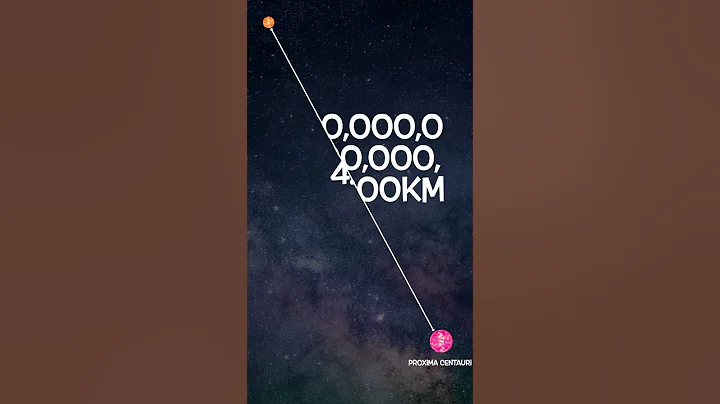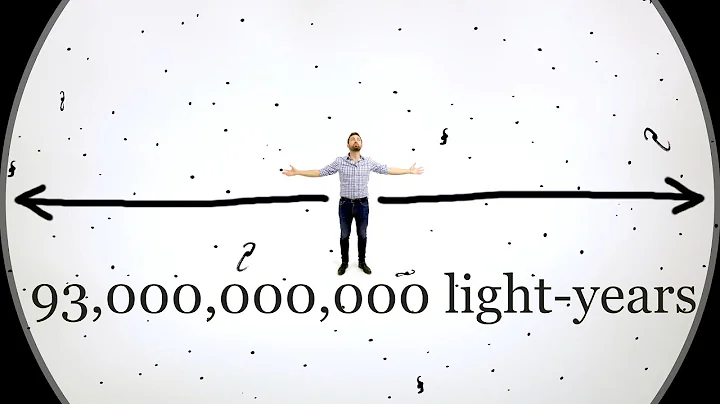Is there a planet with a diameter of 1 light-year in the universe? Regarding this problem, a common thinking is that as long as there is enough matter, it is not impossible to form a planet with a diameter of 1 light-year. However, according to the laws of the universe we know, such a thing is simply impossible to happen.

The so-called planet refers to a large spherical celestial body formed by various materials in the universe. Gravity is one of the forces that maintains the stability of the planet. However, in addition to allowing the various materials that make up the planet to gather together, gravity can also Let the planet as a whole have a tendency to shrink inward. If the internal force of the planet is not strong enough to resist gravity, the volume of the planet will shrink, which is also called gravitational collapse.
Because the size of gravity is proportional to the mass, and it is a long-range force that only has "attraction" but no "repulsion", so the greater the mass of a planet, the stronger its tendency to shrink inward due to gravity, and it will A stronger force is needed to resist gravity, otherwise gravitational collapse will occur and it will be unable to maintain its stability.
In the known universe, the most powerful force inside a planet that can resist gravity is nuclear fusion . If there is no nuclear fusion inside a planet, then when its mass exceeds the " Oppenheimer limit " (Generally considered to be 3.2 solar masses ) After that, there will be no force to prevent its own gravitational collapse. In this case, it will eventually evolve into a black hole, and we cannot call it a "planet" .

It is precisely because of this that the planets in the universe whose mass exceeds the "Oppenheimer limit" are all "burning" stars without exception. There are two powerful forces inside these planets. One is One is gravity, its direction is inward, and the other is the energy released by nuclear fusion inside the planet, its direction is outward. For convenience of description, we can call it "radiation pressure".
The reason why nuclear fusion occurs inside a star is actually because the gravitational collapse of the star creates a high-temperature and high-pressure environment in its core. The greater the mass of a star, the stronger its tendency to shrink inward due to gravity. The core of The higher the temperature and pressure, the more intense the nuclear fusion reaction inside the star, and the stronger the "radiation pressure" it generates.

For a star that exists stably, the two forces inside it actually maintain a dynamic balance. The specific manifestation is that when the gravity is stronger, the star will shrink. When the star shrinks, the temperature of its core will decrease. The pressure will increase, so the nuclear fusion reaction will become more intense, resulting in stronger "radiation pressure". Then the star will expand. When the star expands, the temperature and pressure of its core will decrease, and the nuclear fusion reaction will weaken. Gravity takes over again, and the star shrinks again, and so on.

By the way, because the reaction rate of nuclear fusion is very sensitive to changes in temperature, the volume changes of stars like the sun in the main sequence star stage are so subtle that we can hardly observe them.
The energy of nuclear fusion comes from the strong nuclear force in the nucleus . This is the strongest of the four basic forces in the universe. In comparison, gravity is the weakest. Therefore, follows As the star's mass increases, gravity and "radiation pressure" do not have a one-to-one relationship. When the star's mass exceeds a critical value called the "Eddington limit", the "radiation pressure" inside the star will More than gravity .
In this case, the extra "radiation pressure" will continue to "blow away" part of the material in the outer layer of the star, causing the star's mass to continue to decrease. As the star's mass continues to decrease, the star's nuclear fusion The reaction will weaken and the "radiation pressure" will gradually become smaller. When it reaches a new balance with gravity, the star will no longer lose mass.

This means that the mass of a star cannot grow infinitely, and at most it can only reach the "Eddington limit". If it exceeds this critical value , it will soon "spray" the extra material. go out.
In summary, it can be concluded that the largest planet in the universe can only be a star, and the mass of a stable star can only reach the "Eddington limit" at most. As for the value of the "Eddington limit", it actually depends on the specific internal conditions of the star. Theoretically speaking, it is at most a few hundred solar masses.
Okay, now let's take a look at how massive a planet with a diameter of 1 light-year would be.
As we all know, the mass of a planet is equal to the product of its volume and average density. Now that the volume is determined, we also need to set an average density for it. Under the same mass, the smaller the average density of the planet, the greater its volume. , so of course the smaller the density, the better, but it cannot be too small. After all, if the density is too small, stars cannot be formed.

About 20,000 light-years away from us in the direction of Scutum, there is a red supergiant called "Stevenson 2-18". It is the largest known star. The volume is about 10 billion times that of the sun, but the mass is only 12 to 16 times that of the sun. In other words, its lowest estimated density is only about 0.0000000012 times the density of the sun.
This density is considered to be the lowest among all known planets, so we might as well use this as a reference. Calculated based on this density, a planet with a diameter of 1 light-year can have a mass of up to It is 376.7 billion times the mass of the sun. It can be seen that this is far beyond the "Eddington limit". It is precisely because of this that we can determine that there is no planet with a diameter of 1 light-year in the universe.
Well, let’s stop here today. Welcome everyone to and follow us . See you next time.
(Some pictures in this article are from the Internet. If there is any infringement, please contact the author to delete them)





















